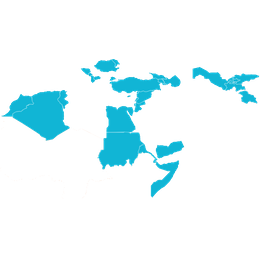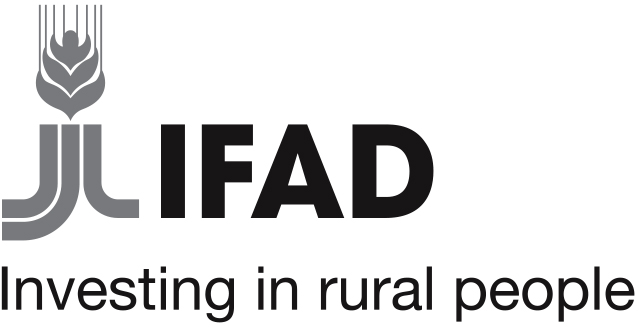Rural development in the Arabian Peninsula
"I see a huge difference with hydroponic, which is the reason why we want to adopt it. All the results are positive – reduced water, fertilizer use and less area used with more yield produced."
Faisal Alawi, grower, BahrainBACKGROUND
The Arabian peninsula is increasingly under pressure from population growth and water scarcity, especially in the context of climate change.
The Arabian Peninsula Regional Program (APRA) transferred proven methods from research stations to end-users, resulting in new efficient, sustainable and economically beneficial farming practices.
WHAT’S INVOLVED
Resource management
The project hinged on managing scarce natural resources in areas with widespread desertification. A shift towards more water-efficient crops such as indigenous Buffel grass, and water-efficient production through hydroponics, were widely adopted by farmers across the project.
Environmental conservation
The project included rangeland rehabilitation measures covering 56 hectares of degraded land in Qatar, Kuwait, Saudi Arabia and Yemen. Through water harvesting, seeding, planting and protection from grazing, plant coverage and density were increased. Protective cultivation techniques also reduced the need for pesticides.
Training and development
Researchers, development agents and growers have been trained and supported through hands-on learning programmes and field schools. This approach helps embed and sustain the new methods, as well as contributing to further research and refinement of the techniques.EXPLORE THIS SOLUTION
The APRA project can offer
- Quantified, positive outcomes which can support the case for similar projects
- A proven three-part approach that combines innovation with ongoing research and support so that positive changes are sustained
- Insights on the management of cross-border knowledge transfer with government support

Countries involved
Bahrain, Kuwait, Oman, Qatar, Saudi Arabia, United Arab Emirates and the Republic of Yemen
Project partners
IFAD, International Center for Agricultural Research in Dry Areas (ICARDA), Arab Fund for Economic and Social Development (AFESD), OPEC Fund for International Development (OFID), National Agricultural Research and Extension Systems (NARES)
Project dates
June 2008 – December 2013
Share this solution
Bookmark this solution
BookmarkShow Full Solution
Summary
The Arabian Peninsula region faces issues of sustainable water and land management, amplified by population growth and climate change. Livestock is considered a key activity for economic development, and constitutes a main source of income for most farmers. The Arabian Peninsula Regional Program (APRA) technology transfer project addressed challenges in the region’s agricultural sector by focusing on the introduction of sustainable technological packages to resource-poor farmers and pastoralists. Its aim was to promote the development of more sustainable land and water use and preserve the region’s environment, alongside improving rural livelihoods.
Challenge
The Arabian Peninsula is one of the driest inhabited regions in the world, characterized by low, variable rainfall and limited surface water resources. Arable land is also in limited supply, with over 95 per cent of the total land area suffering desertification, and over 80 per cent degraded as a result of wind erosion, encroaching urbanization and the lack of effective programs that encourage the use of resources in a more sustainable manner. If current inefficient practices continue, rapid depletion of water resources, extinction of endemic species and stark environmental destruction will be the major fallouts.
Solution
The APRA project took water-efficient, sustainable methods developed in research stations and private farms, and transferred them to 480 pilot growers across seven countries in the Arabian Peninsula region. The technologies were designed to increase crop and livestock production and productivity, improve water use efficiency and conserve resources. Additionally, the project aimed to enhance the capacity of national research and extension programmes to introduce targeted technologies and enhance communication among various stakeholders.
Three major activities were included:
(1) Introduction and adoption of technology packages
-
Development and promotion of an integrated production system for indigenous forage species with increased efficiency. This included replacing Rhodes grass with Buffel grass, an indigenous forage species with a similar nutrient profile but lower water requirements.
-
Rehabilitation of rangeland, including water-harvesting, re-planting and seeding depleted areas and protecting them from grazing.
-
Promotion of integrated production and protection management (IPPM) technologies which c pesticide use.
-
Promotion of water-efficient and high-density hydroponic production techniques for quality cash crops.
(2) Problem solving research and impact assessment
Development continued during the technology transfer, with scientists and researchers providing ongoing input to end-users. Projects included:
-
Improving the productivity of hydroponics systems by adding a simple automatic controller for nutrient solution (fertigation systems).
-
Enhancing the capacity of the National Agricultural Research and Extension Systems (NARS) in adaptive and problem solving research.
-
Socio-economic and impact assessment studies.
(3) Capacity building and institutional strengthening
In order to embed the new technologies in a sustainable way, hands-on training and support was provided, including:
-
Conducting regional training courses, workshops and expert consultation meetings.
-
Knowledge dissemination and networking.
-
Implementing an adaptive research and problem solving study base on growers and end-users needs.
Results
Between 2008 and 2013 the project exceeded its adoption targets almost two-fold, and in the case of the spineless cactus, four times the target number of growers adopted the solution.
Major accomplishments include:
-
153,340 cubic metres of water per year saved by switching from Rhodes grass to Buffel grass across an estimated 9.02 ha of land. Around 90 per cent of the growers rated Buffel grass as 'good' or 'very good'.
-
Number of pesticides reduced from 28 to three through the adoption of IPPM (integrated production and protection management) techniques in study based in Yemen. The change also boosted pilot growers' incomes by 12 per cent and increased water productivity.
-
More crops per drop: 86 cubic metres of water (Saudi Arabia) and 120 cubic metres of water (UAE) saved per ton of tomatoes produced by hydroponic methods vs. conventional soil systems.
-
More than 90 per cent of participants in the APRP training programme agreeing that their objectives were met, rating the courses as 'excellent' and 'very good'.
-
Seed production systems established and producing sufficient quantities of seed of forage species.
-
Sub-regional knowledge dissemination and networking system established, with annual meetings and group training. As a result, farmers have been empowered to adapt and develop project technologies to meet their own needs.
-
Policy and financial support on a national level: Abu Dhabi took the decision to ban the cultivation of Rhodes grass and introduce loans and grants to speed up the adoption of programme technologies, while Oman, UAE, Qatar and Bahrain adopted incentive policies for growers adopting hydroponic and IPPM methods.
Lessons learned and potential for replication
-
Farmer-to-farmer extension systems were used to transfer technologies from pilot demonstration points at private farms. These, and the introductory workshops and field schools, were highly effective in getting growers to adopt the technologies.
-
Regions must be well co-ordinated to avoid duplication of effort and make the best use of limited resources. More effective links are needed between the National Agricultural Research Systems (NARS) and the National Agricultural Extension Systems (NAES)
-
To sustain the project's gains, there is a need for greater technical capability and skill level among tech transfer personnel.
-
Although adoption rates were high, research in 2012 showed that around 30 per cent of growers using hydroponics reverted back to conventional soil systems within one or two years. Farmer feedback suggests this was due to a lack of active technical back-stopping and extension systems, leading to poor know-how. There were similar situations with indigenous irrigated forage and spineless cactus.
Next steps
The success with the pilot growers paves the way for further support through subsidies and policy changes to promote sustainable agriculture in the region. Other potential developments include technology transfer to more farmers, and making the technologies more economically feasible by using local production materials and resources.
Solution Document Downloads
Solution Additional Resources
Blog post on the technology transfer project from icarda.org ICARDA web page on work in the Arabian PeninsulaLast update: 22/09/2018


